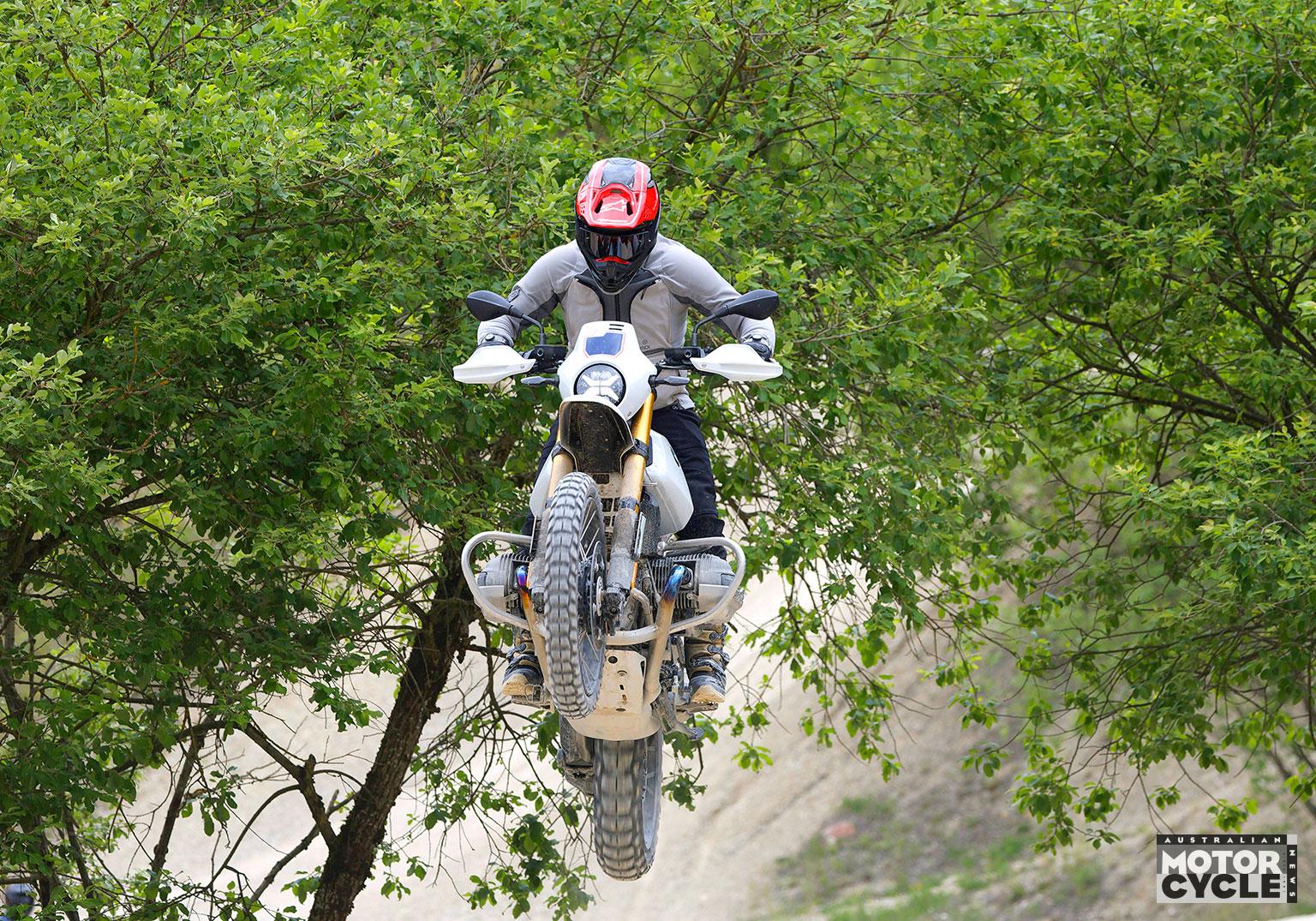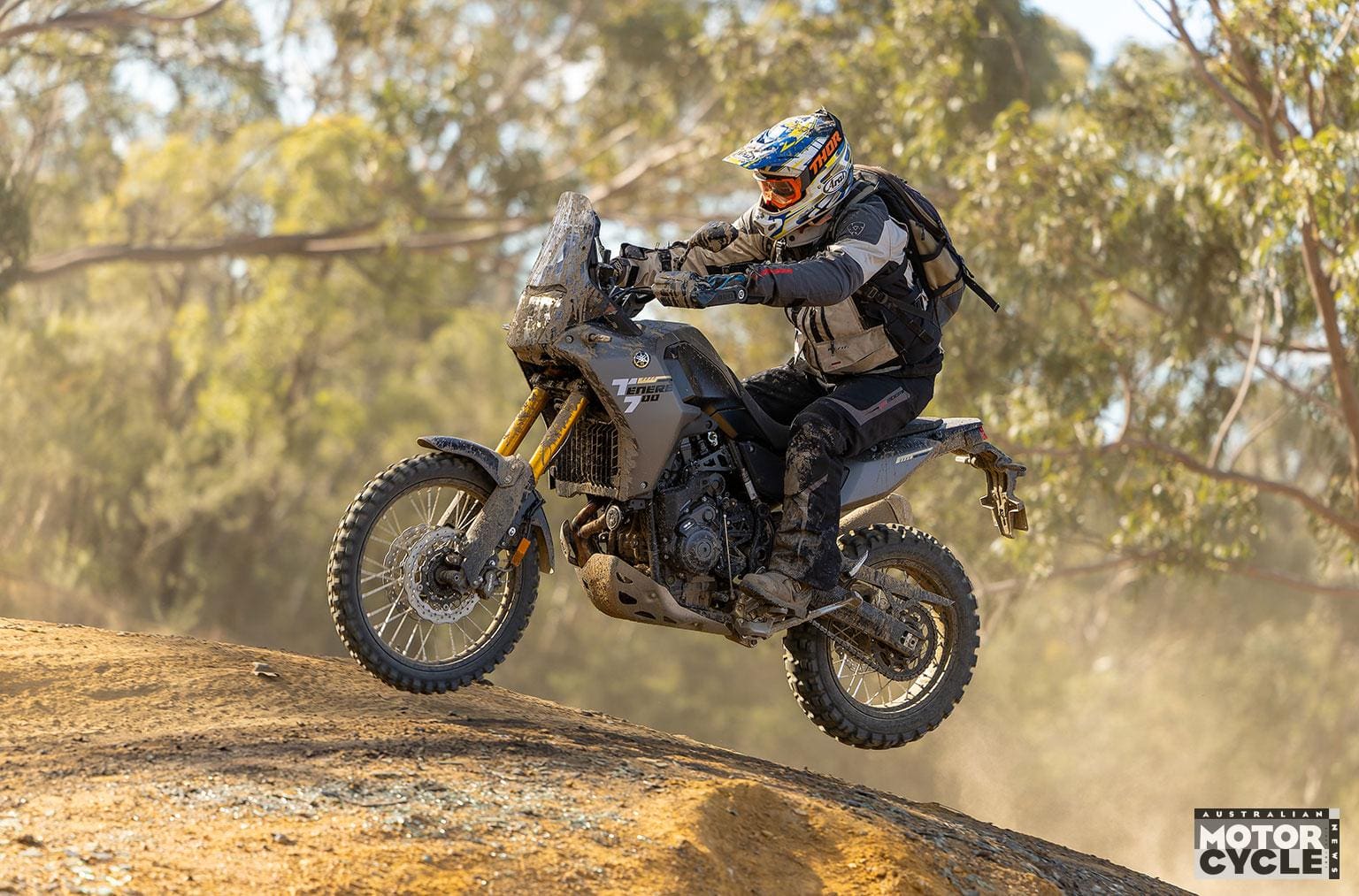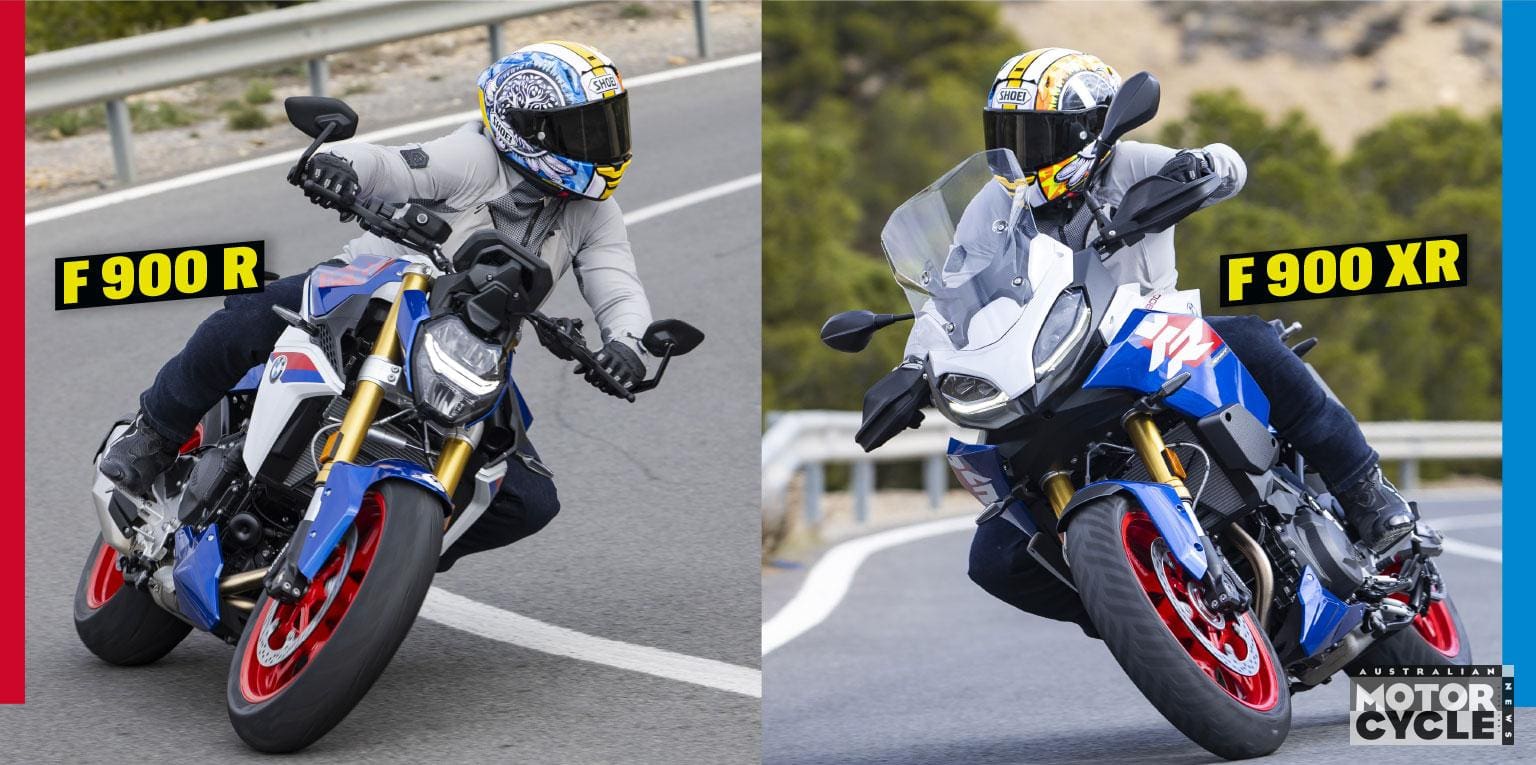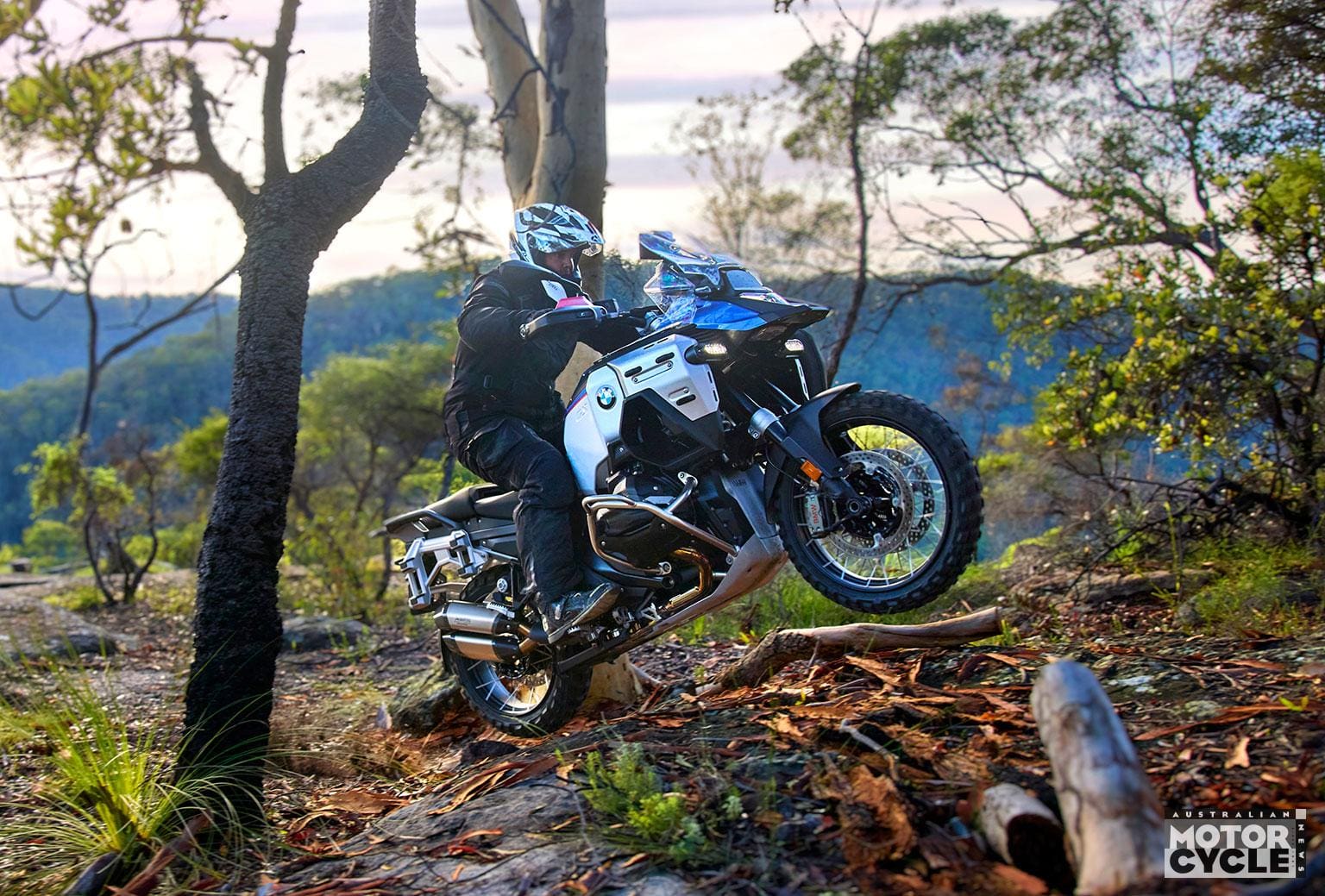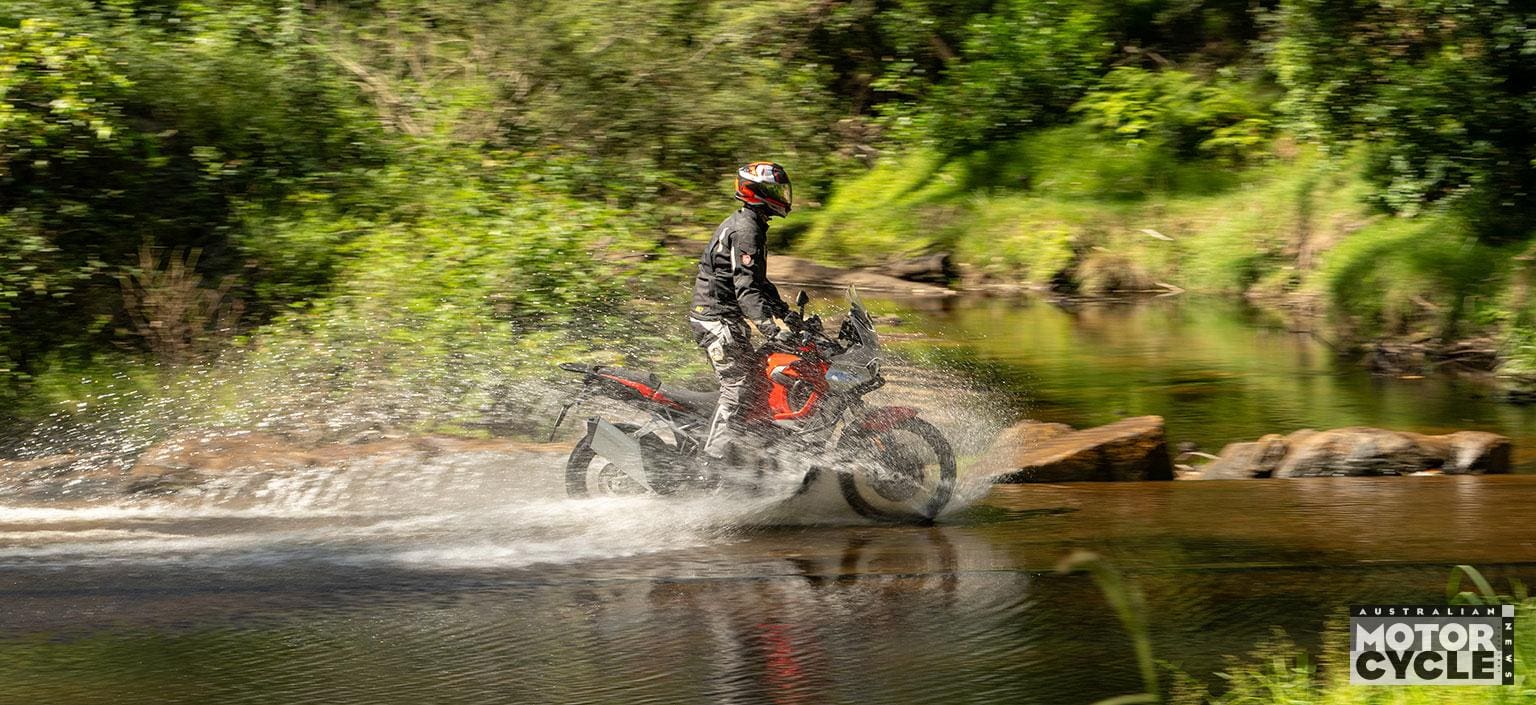In one of its biggest overhauls to date, BMW’s R 1300 GS Adventure follows its sibling. But will it outshine the GS?
The highly anticipated R 1300 GS Adventure has hit Aussie shores – and not a moment too soon: it’s little brother, the R 1300 GS, is still strutting around with AMCN’s 2024 Motorcycle of the Year gong swinging off its handlebar; last November Adam Child did the world launch in Spain; and now it’s my turn to cut loose on BMW’s much-anticipated beast in real Aussie conditions.
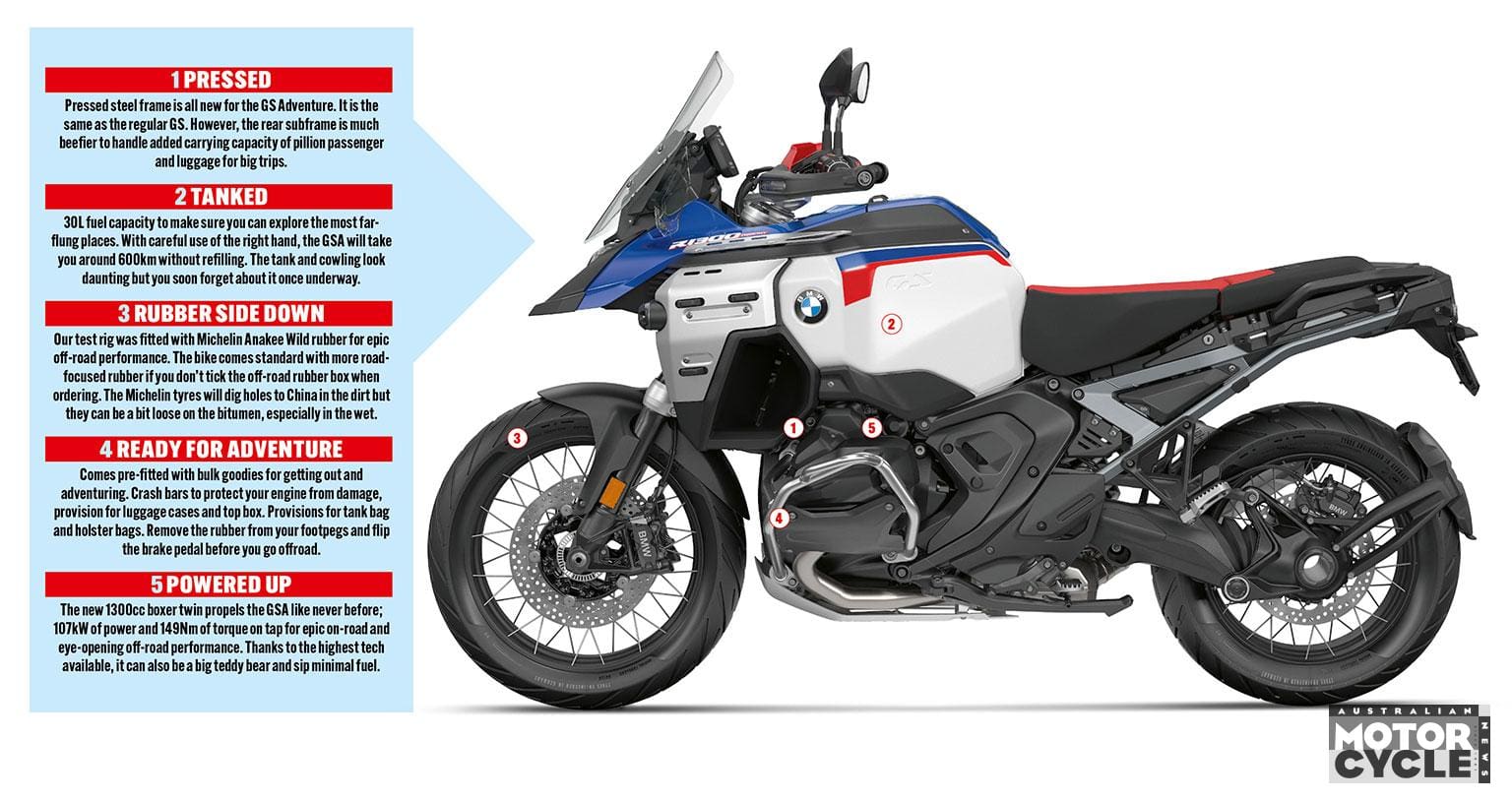
As the old saying goes, “Never judge a book by its cover”. I can’t say I’m not excited to ride the new R 1300 GS Adventure. I am. After spending some time on the regular GS, I wondered how different the Adventure would be when it finally arrived. I wonder no longer as I lay eyes on the GS Adventure Trophy in the flesh. It looks fantastic; purposeful, rugged and heavy. But, most of all, daunting. I don’t remember the R 1300 GS Triple Black I tested looking this big and intimidating.
Bumping it off the centrestand for the first time is scary. With a full 30L fuel tank you need to steady it quickly and get it on the sidestand before losing balance. Generally speaking, the big GSA’s 269kg heft isn’t really that heavy, its more the fact that it’s quite tall at the same time. That’s my theory anyway.
WIDE BERTH
After a brief refresher on the multitude of gadgets and functions, I climb aboard and point the beast directly into peak hour Sydney traffic. Straight away I’ve forgotten the weight, which feels like it simply evaporates once my feet are on the pegs and rolling. However, a new issue appears: the GS Adventure’s width.
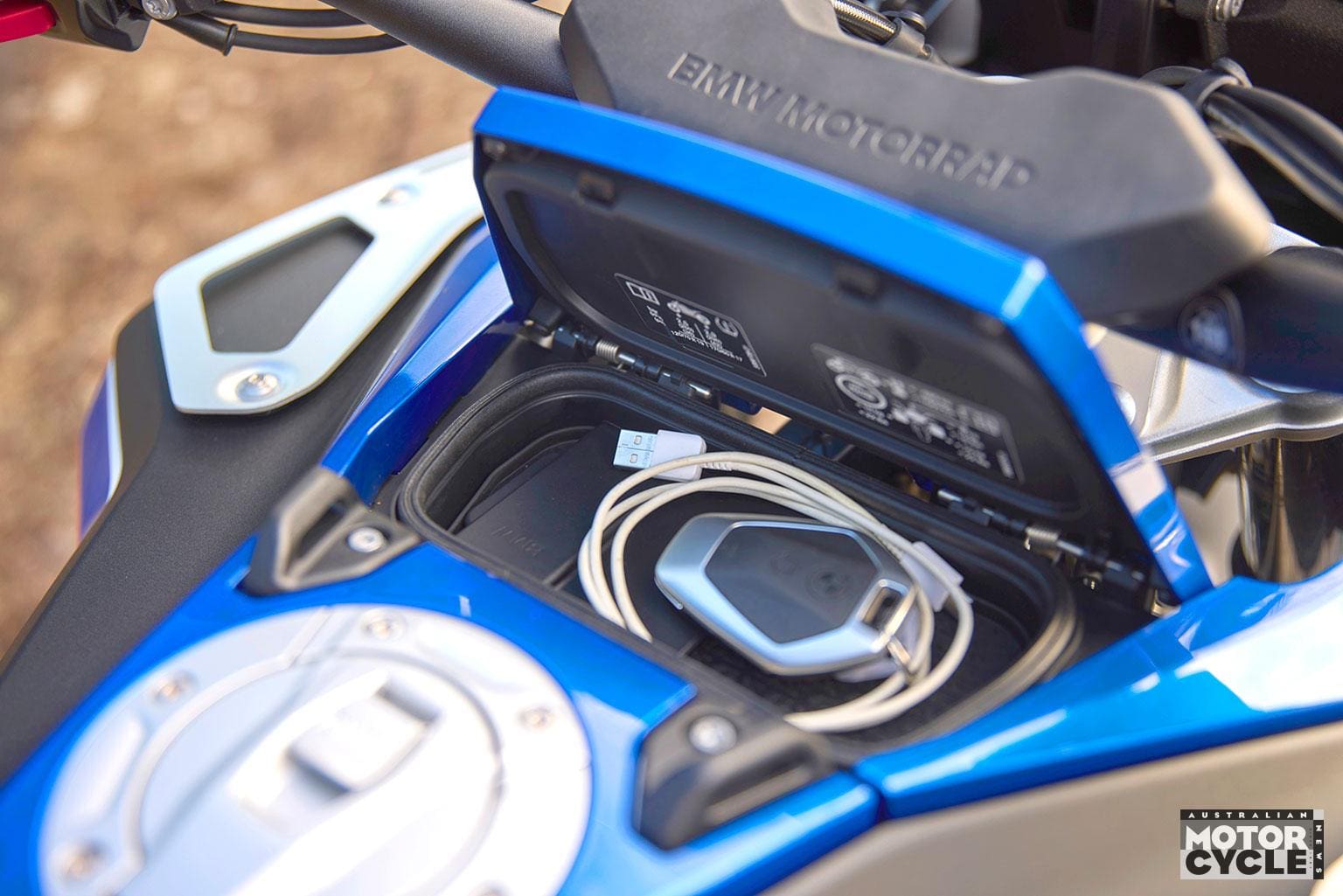
Holy smokes, it’s wide. More than a metre wide, in fact. This makes my trip home a bit longer than I had hoped as I can’t quite fit through the same gaps. The ‘bars, engine crash bars and optional holster side bags add to the bulk. From the rider’s position it looks wider than a cargo ship. Extra care must be taken when moving between cars. The crash bars look to be almost identical to the regular GS, but BMW has added some extra extensions that push the width out. Then there’s the mega fuel tank and cowling, which sits up high and is wide on its own; the holster bags then clip on the sides, making it look wider again.
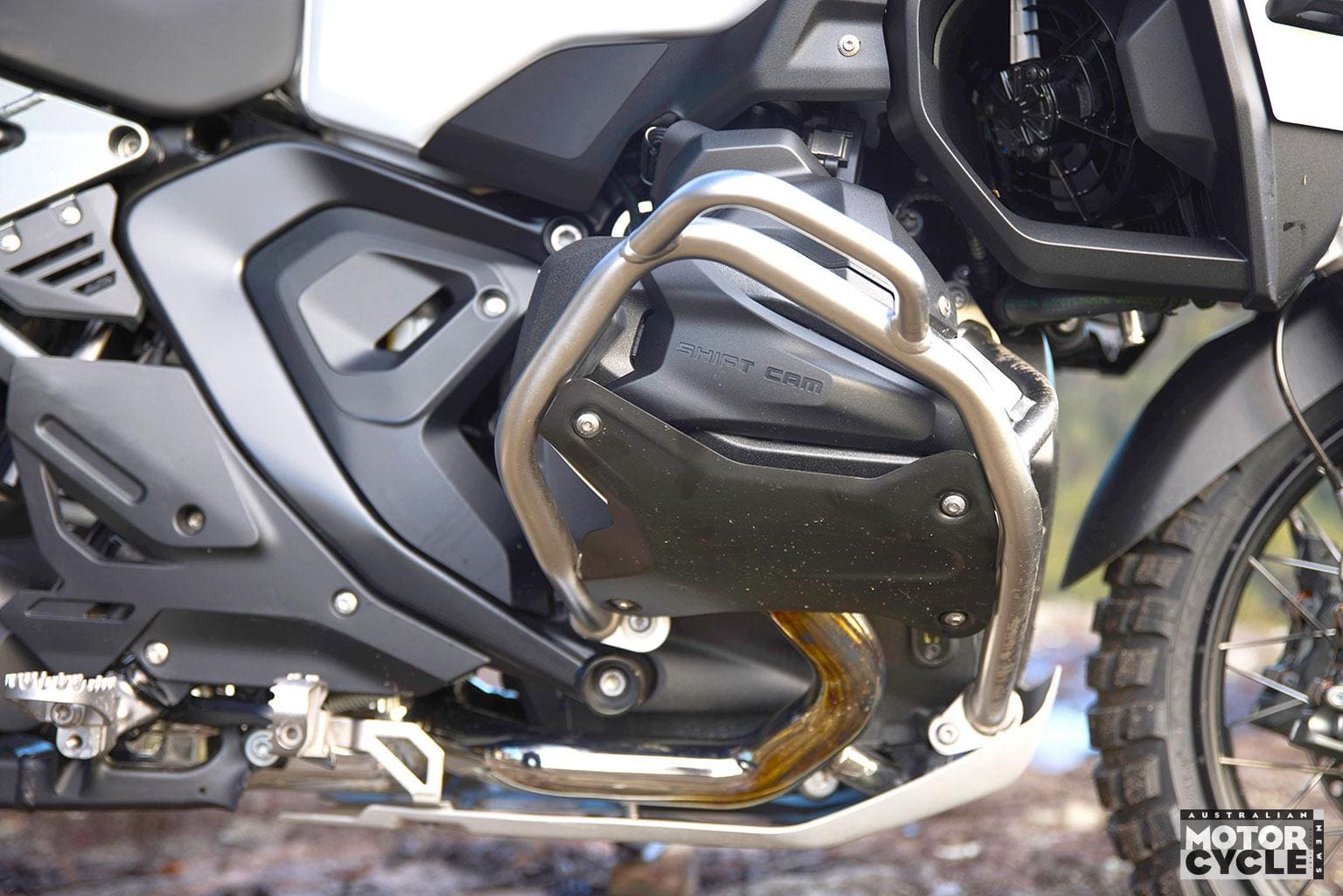
SETTLING IN
Getting comfortable doesn’t take long, it is a GS after all. The cockpit is super roomy, very snug and well protected from the elements thanks to the huge windscreen and wind deflectors off the sides of the dash unit. The quirkiness of all the GS models before it has not hollowed out its soul, however it is way more refined. Strangely I feel it is even more refined than the regular R 1300 GS.
Some personal gripes of mine on the GS were the noisy engine and rough gear shifts. I’m not sure if the extra bodywork is deflecting the sound away, but I’m almost certain the GS Adventure engine is quieter, even though BMW say it’s identical. The shifting feels ironed out also. It wasn’t terrible before but not as polished as I would expect from BMW. This one feels much nicer.
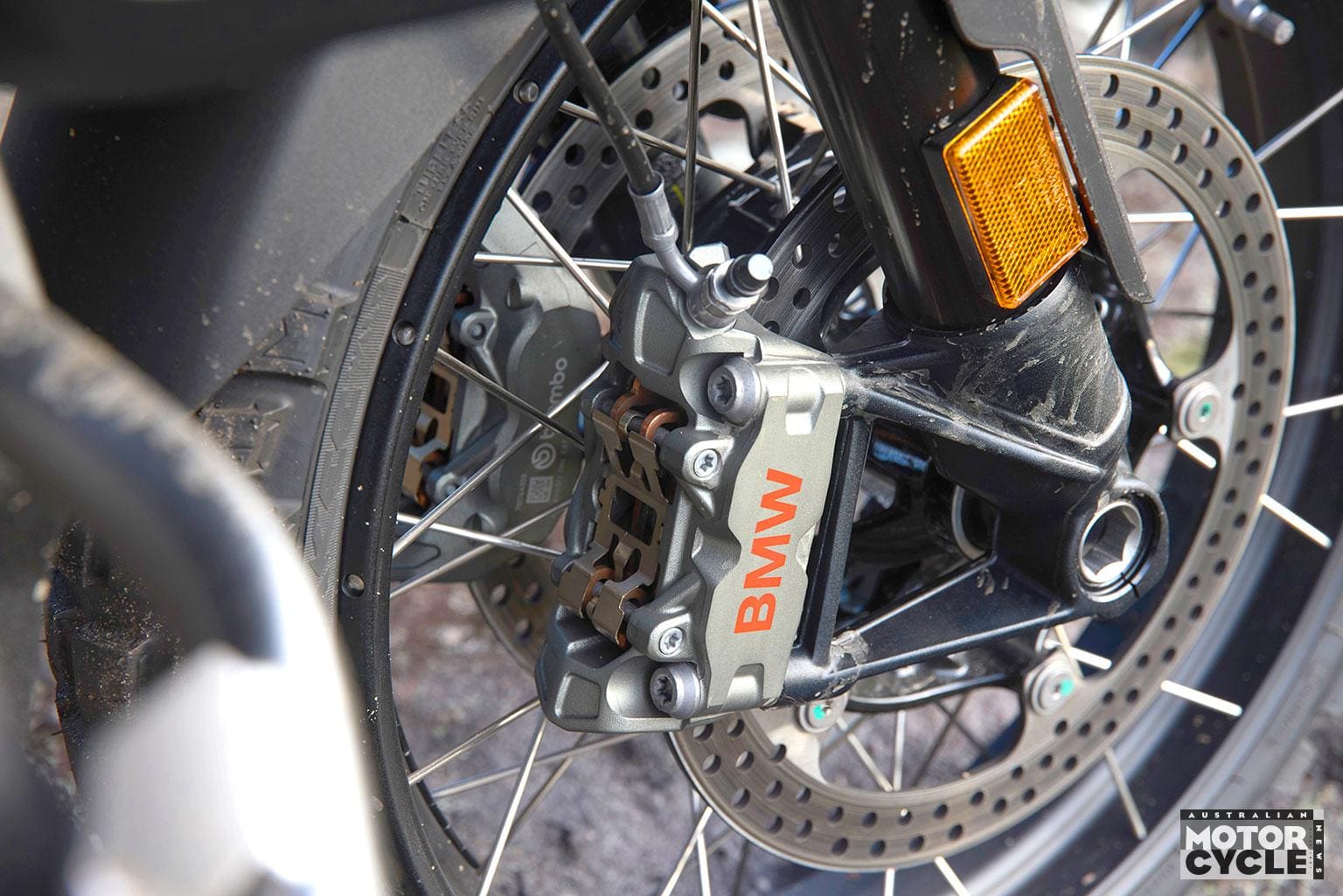
In terms of weight, the GSA is an extra 32kg heavier than the standard GS. Thankfully it doesn’t feel like this has sapped the power too much – it’s still a rocket. This 1300cc boxer twin is a real weapon. From right off idle power is aplenty and, thanks to the ShiftCam set-up, a standout, allowing it to still pull third-gear, stand-up, no-clutch wheelies with a full 30L of fuel on board. (I had to test it for scientific purposes, you know.)
The bulk of the extra weight seems to be due to the new rear sub-frame; it’s much chunkier on the Adventure model. Obviously, the huge fuel tank and cowling adds a considerable amount of beef also. There’s an extra 20mm of suspension travel and the rest is essentially identical to the regular GS. Handling feels just as light but it doesn’t fall into the corners as hard as the GS. It still does want to turn but I don’t have to hold it back as much.
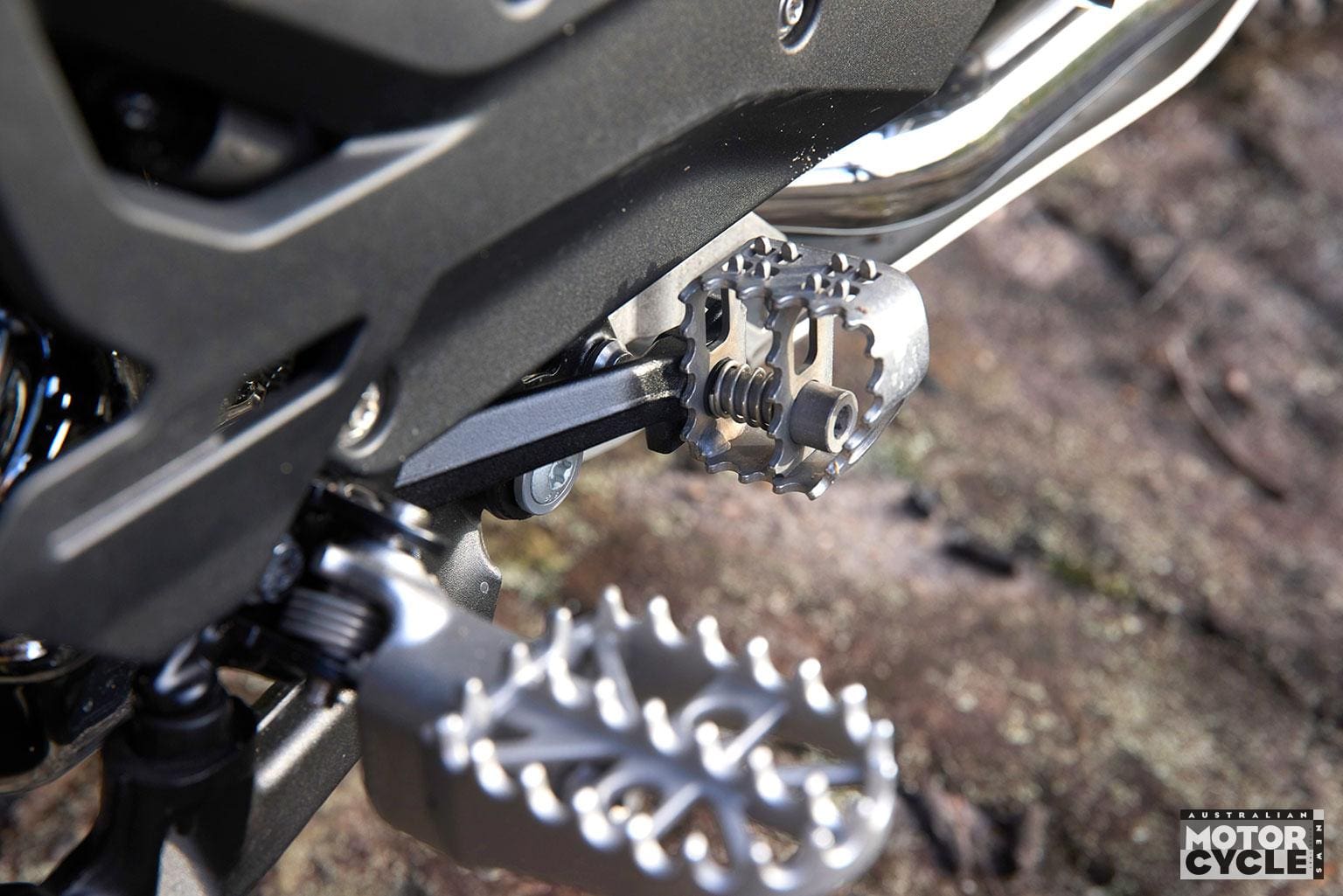
The test bike was fitted with Michelin Anakee Wild tyres, whereas most of the BMWs I’ve ridden have had the Metzeler Karoo tyres. The Michelins perform better off-road – but they can be a bit sketchy on the bitumen when pushing the envelope. I feel the 1300 just has too much torque for the Anakee Wilds as they will spin and slide without much effort. I had a few moments in the rain too, which left me being extra cautious when on the bitumen. Tyres can have a massive effect on a bike’s feeling and grip. So don’t go throwing the baby out with the bathwater, so to speak, if you haven’t tried a different tyre.
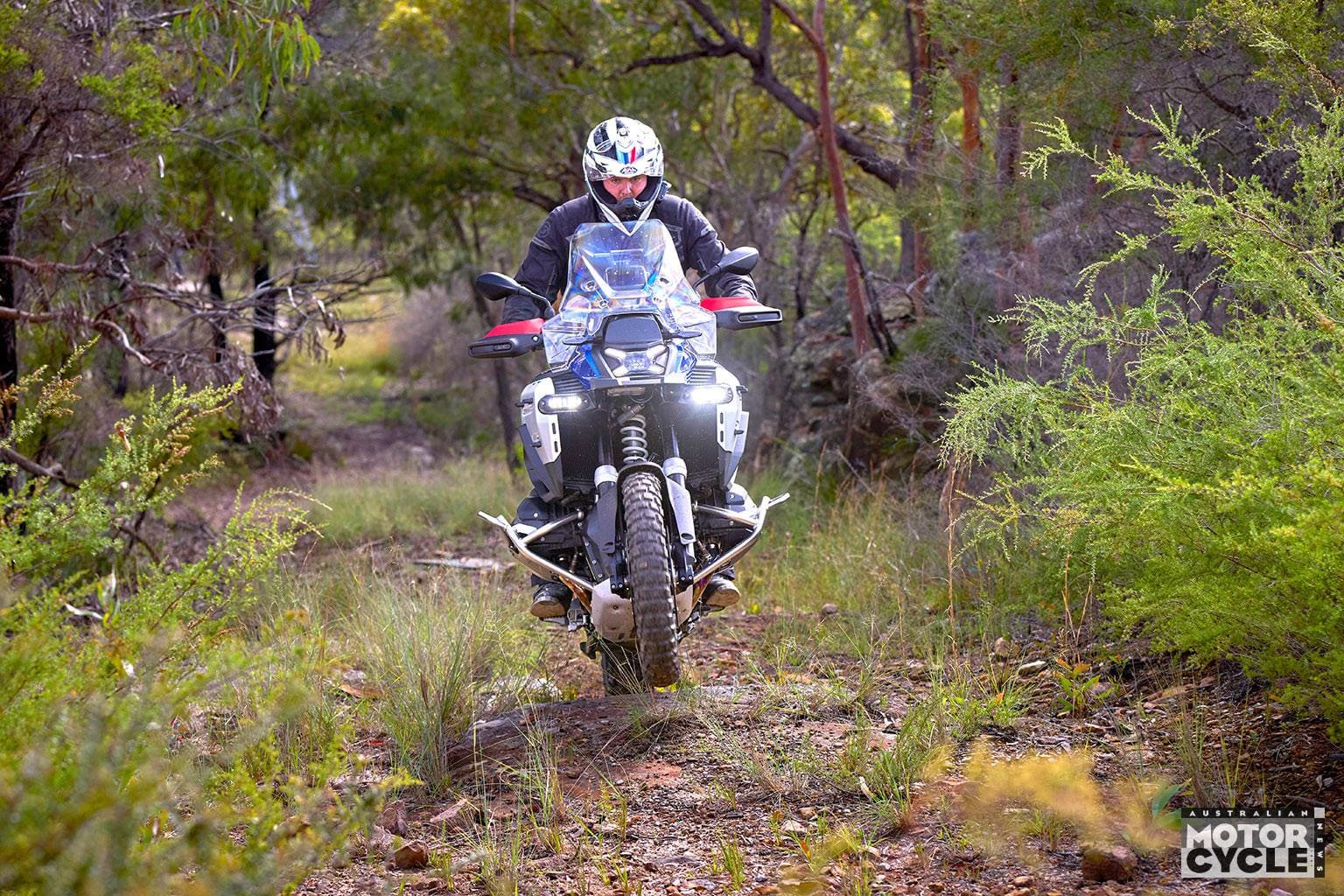
GOING WILD
Offroad, the GSA has no right being as manoeuvrable as it is. Just sitting on it and looking down at the cockpit will have your brain setting off alarm bells and telling you to steer away from any dodgy looking tracks, but it shouldn’t.
Not being one to die without knowing the answers, I head off the main gravel road and into some disused powerline tracks and the GSA simply eats it up. I disable the adaptive ride height, so it stays in the full height setting. While this makes me feel like a short arse, it means I have full ground clearance available even at low speed, so I don’t get hooked up on rocks or get the massive engine wedged in a rut made by kids on MX bikes. If I keep the ride height setting in the favourite slot on the dash, it takes a flick of the left thumb to select the low setting and it comes right back down when I need it 30mm lower.
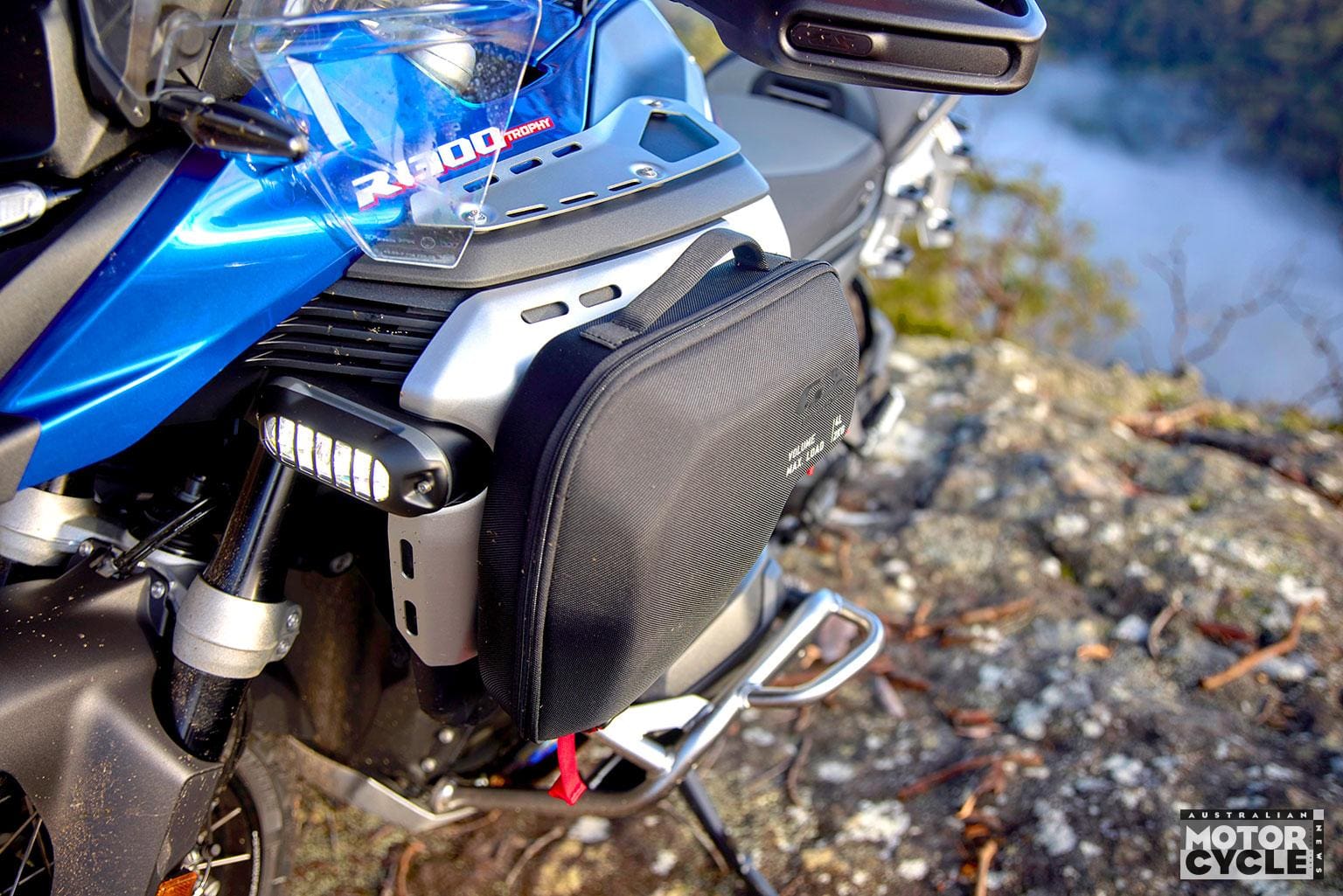
Moving about at walking pace or less on the GSA is a breeze when standing up; it feels more stable and steadier than the normal GS but you follow the bike’s line a little more rather than it following your line, if you know what I mean. Negotiating steep hills takes a bit of pre-planning to avoid stopping and having to roll back or turn around. It’s certainly no enduro bike when you need to make a U-turn on a single track.
With Enduro Pro mode dialled up on the menu, I set about getting some air under the tyres and a few drifts going. The extra 20mm of suspension travel is put to good use with the extra weight. I still prefer the harder setting of the four options in the suspension menu when offroad as I did with the GS to resist bottoming out when doing jumps, but I figure most owners wouldn’t be jumping their GSA.
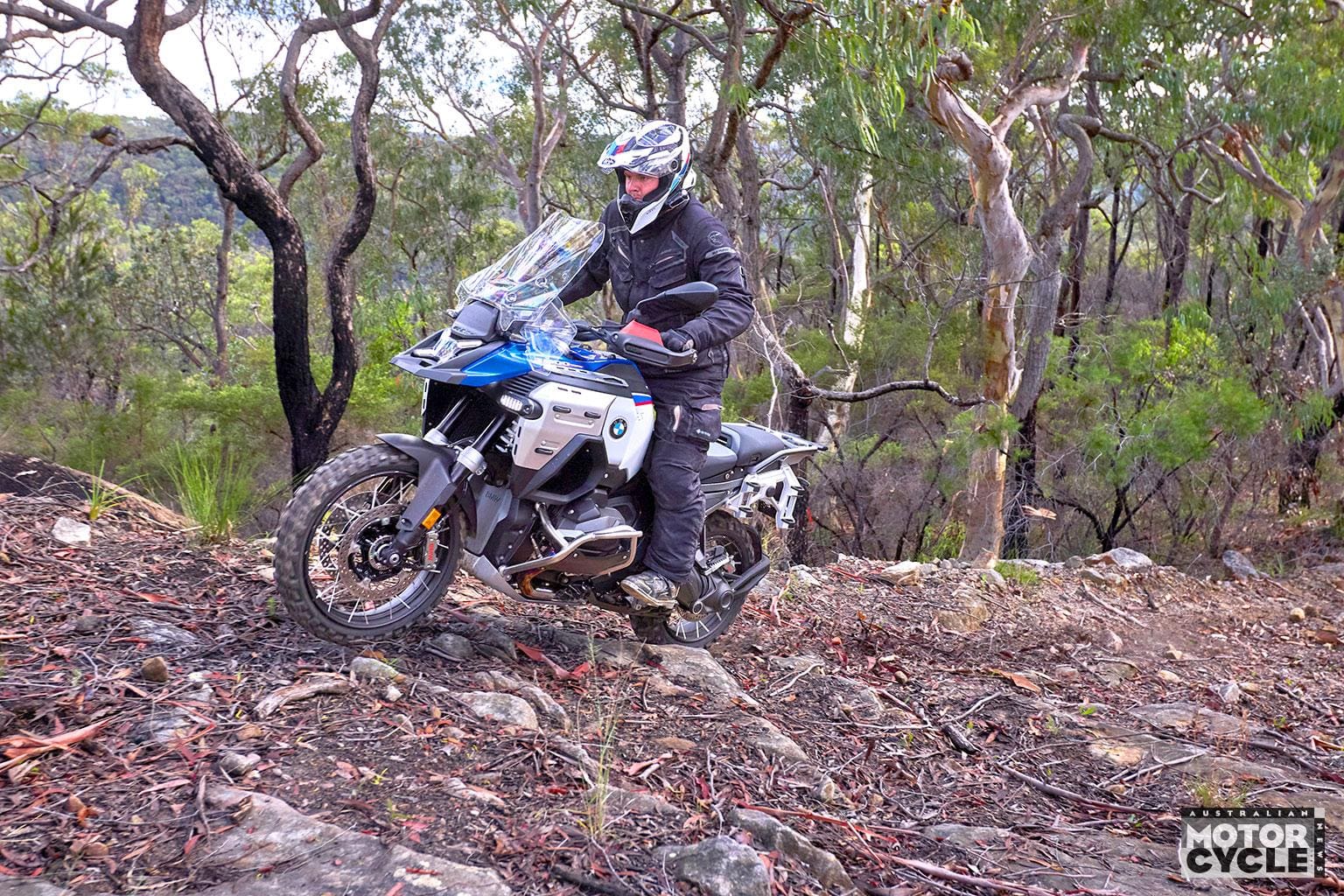
There are riding modes galore but only four are available at any one time. In short, I feel the Pro modes are a must-have. To me, they mean skids and wheelies. They allow power slides, rear ABS off skids (in Enduro Pro mode) and of course wheelies for when you need to hop over a log or rock. So, with a bit more freedom from the electronic gadgets, I’m sliding corners and hitting apexes sideways like legendary Australian speedway racer Davey Watt.
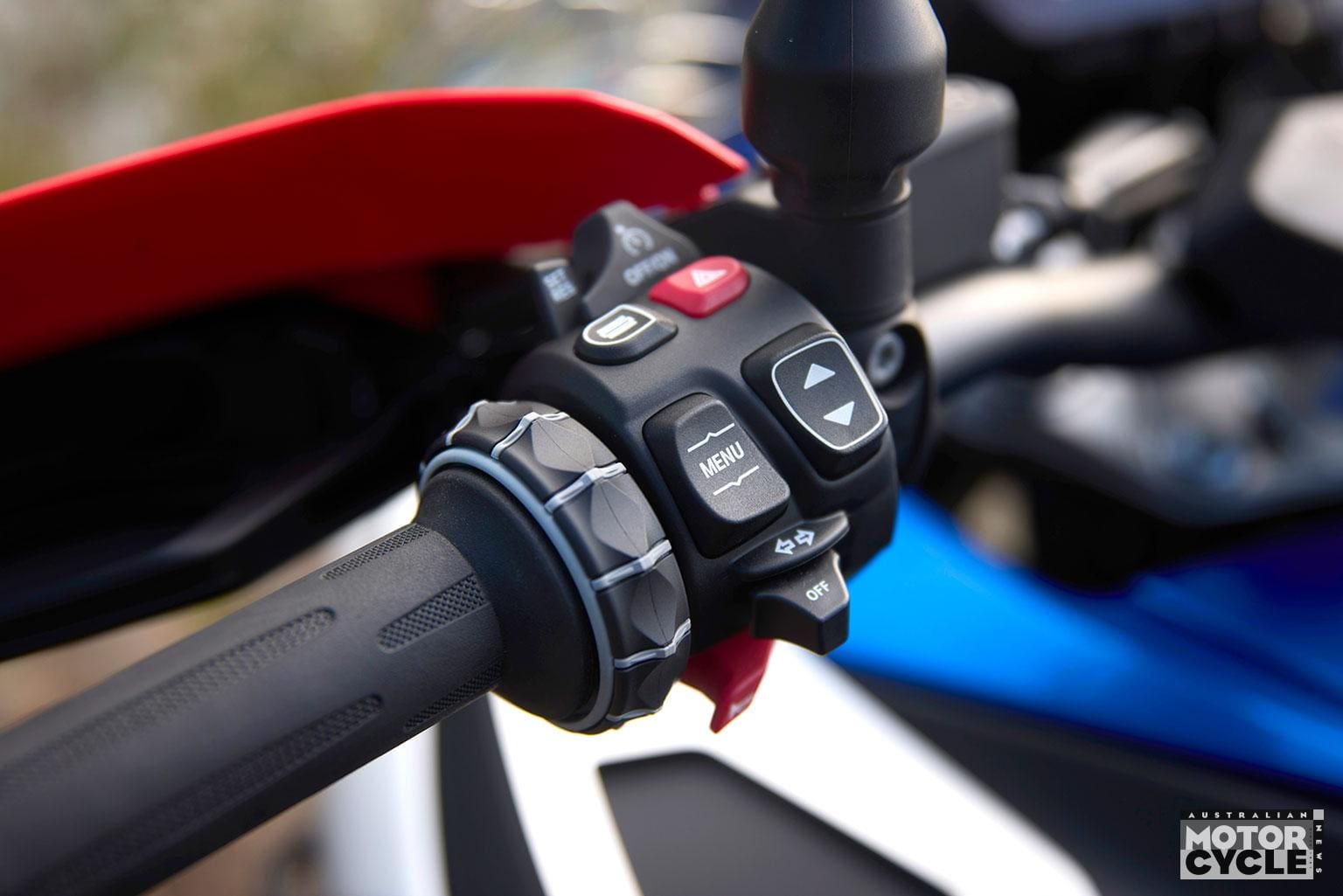
This drifting prowess must run in the name, so in the interests of testing the equipment, I switch the traction control completely off. It turns out that the BMW gadgets are doing way more for my drifting than I gave them credit for. With an overconfident throttle hand, the GSA will dig trenches that Endeavor Energy would be proud of thanks to the Michelin Anakee Wild rubber. Soon after the trench is dug I point it around a corner with the rear wheel sliding, at which time both the extra weight over the rear end and physics join the party. It becomes very exciting very quickly, so I ease off the throttle slightly and hold my line until it starts to grip and comes back to centre. I don’t care how good tyres are, 145hp and 149Nm make all of them feel like slicks in mud at full throttle – and I am NOT speedway champion Davey Watt.
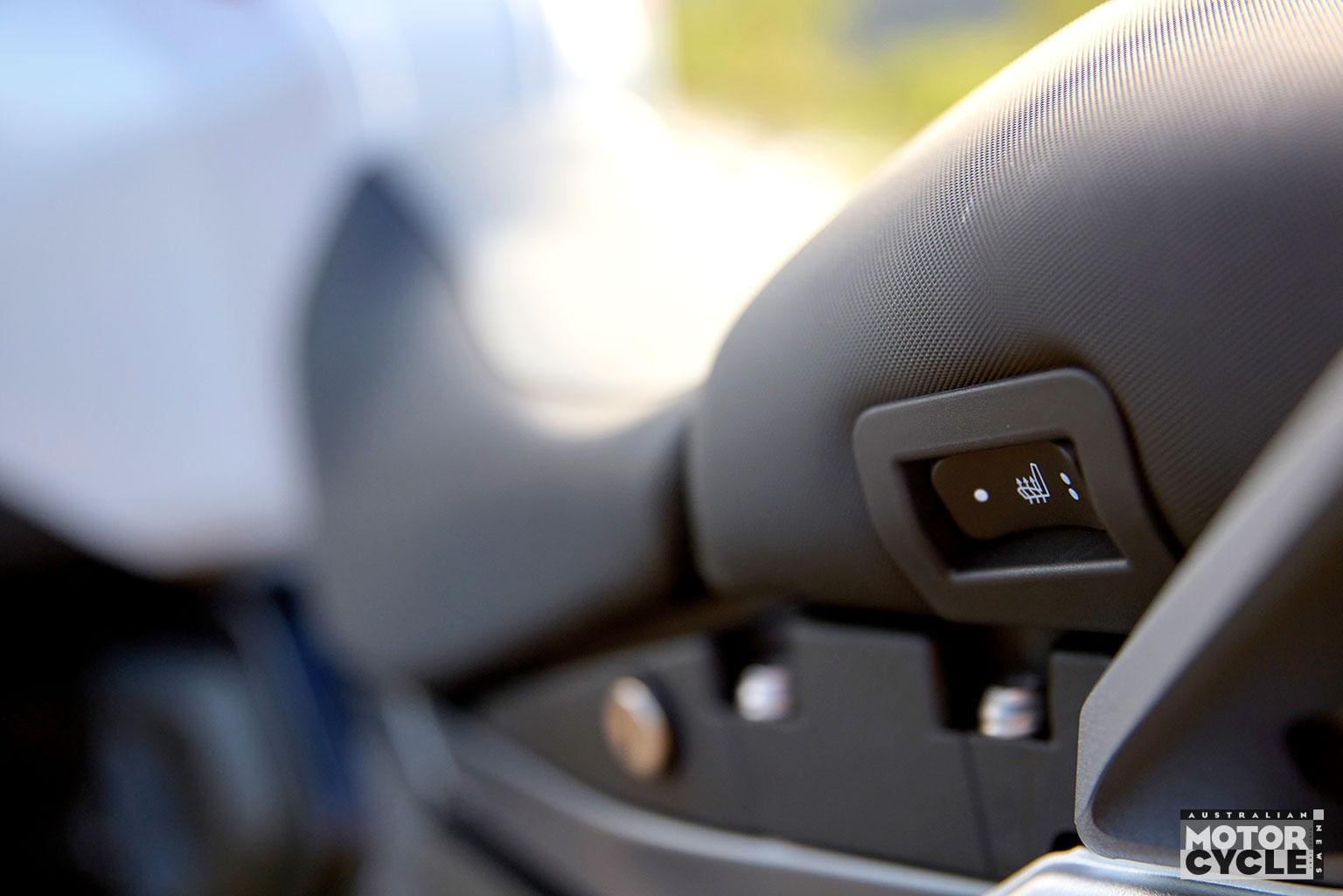
LONG GAMER
Back on the open road, the GSA is every bit the long-distance tourer. It is genuinely capable of almost 600km on one tank of fuel, if your body is seasoned to being that long on the bike. Running it in Eco mode for the cruising sections and Dynamic mode in the twisties and even about 100km of winding dirt road with a pillion on the back, I got an average consumption of 5.0L/100km over a 500km ride. That’s impressive.
The rider and pillion comfort is exceptional, especially when you can select nice and cushy suspension for the bumpy roads and then, with a couple of clicks, you can firm it right up for better handling in the twisties. The rider’s seat can be adjusted without tools to two different heights; the rider’s footpegs also have two height options; and the electric windscreen is so good it might be too good – I must ride with my visor open for a bit of airflow in the heat as the screen is stopping all of it even getting to me. If I owned the GSA, it would get a lower screen or I’d remove the wind deflectors in summer. Even on a hot day in traffic, the cowling directs the hot air from the radiators out the sides and away from the rider and pillion.
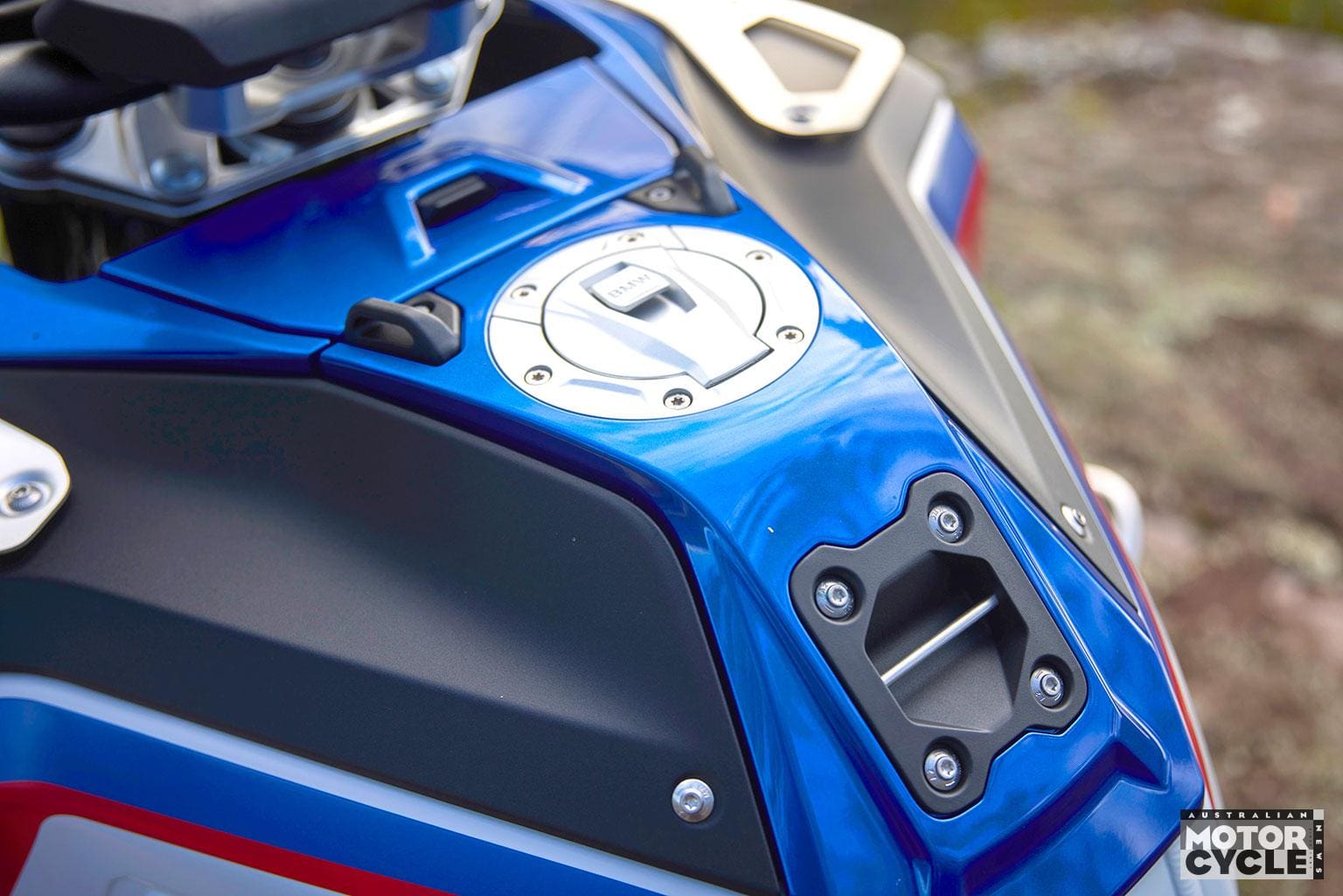
I feel as though BMW has thought of almost everything with the GSA. It comes ready to accept luggage cases and a top box. The higher spec models come ready for the GPS unit and there are spots to attach luggage like the holster bags fitted to this one, a seat bag or a tank bag.
I’m a bit bummed to find that the little waterproof hidey hole for your phone on top of the tank has shrunk slightly. Just enough that my phone (S22 Ultra) does not fit in this one. The GS one accepted my phone just fine, although I couldn’t plug it in and fit it in there at the same time.
A super-handy feature I discovered was the adaptive ride height system function that jacks the bike up as you put your foot on the centrestand. As you push the stand down it cranks the bike’s preload to maximum, making it easier to get it up onto the stand. Once its on the stand, the preload is released back to normal. Amazing!
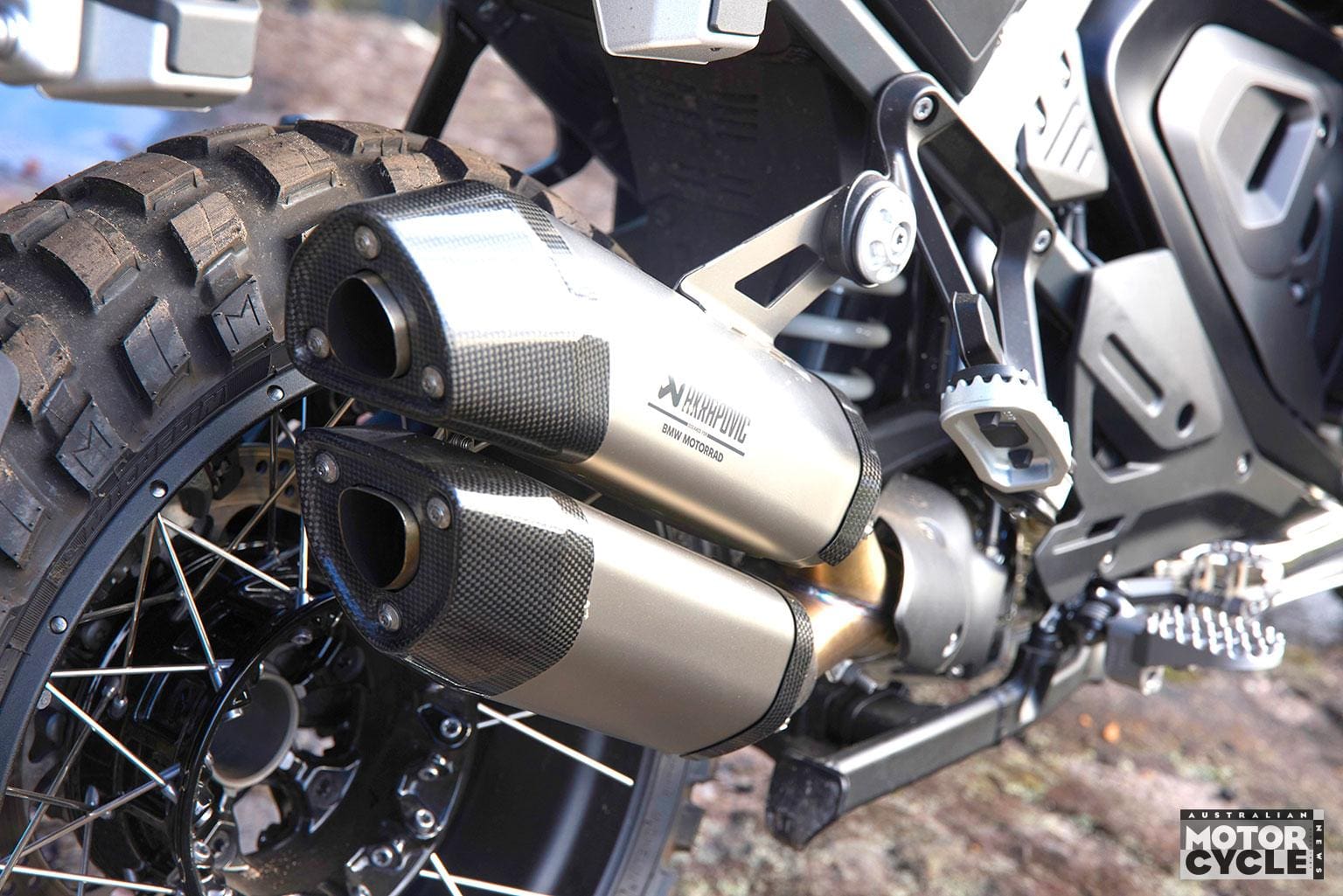
The concept isn’t new, but adventure bikes make excellent touring bikes, especially here in Australia where we have so many great roads off the highway.
For me, there is no desire to tour on a dedicated road bike if you can do it on an adventure bike like this. Yes, it squirms and wobbles a bit like a dirt bike, but the route options are simply endless and it is just as comfortable for rider and pillion. With a more road-orientated tyre you could never even worry about taking it off the road and still have the ultimate all-round, all-conquering motorcycle.
BMW had big shoes to fill with the previous GS Adventure. They’ve done it so well I think I’ll call this one Bigfoot.
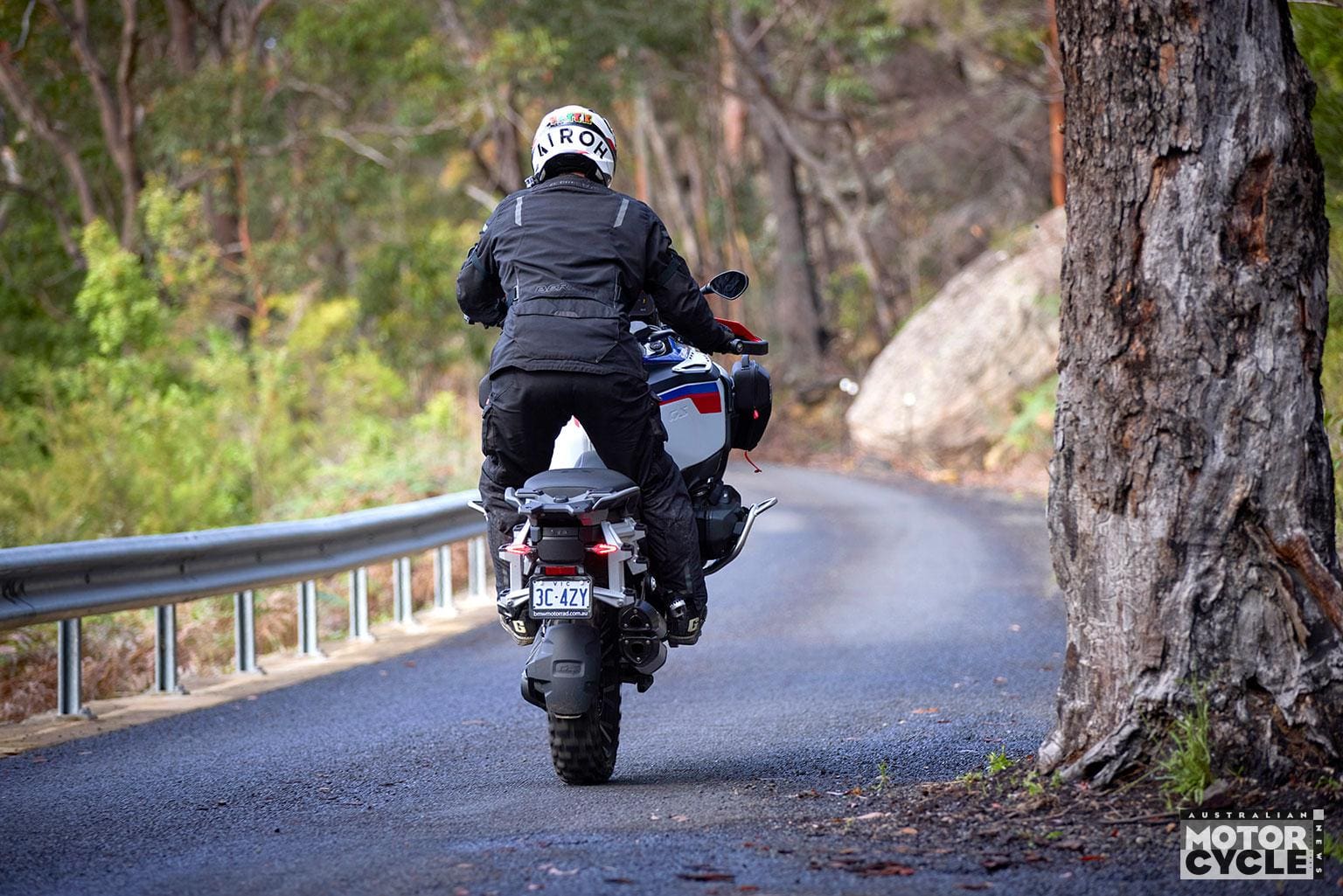
PROS – Comfort for days, extra weight not an issue, extreme versatility, windscreen so powerful it’s like riding in your own climate-controlled space.
CONS – Cost, but you get what you pay for. Where does my phone go? If you drop the GSA Trophy in the bush, it’s probably going to stay dropped until a mate rocks up.
THE COMPETITION
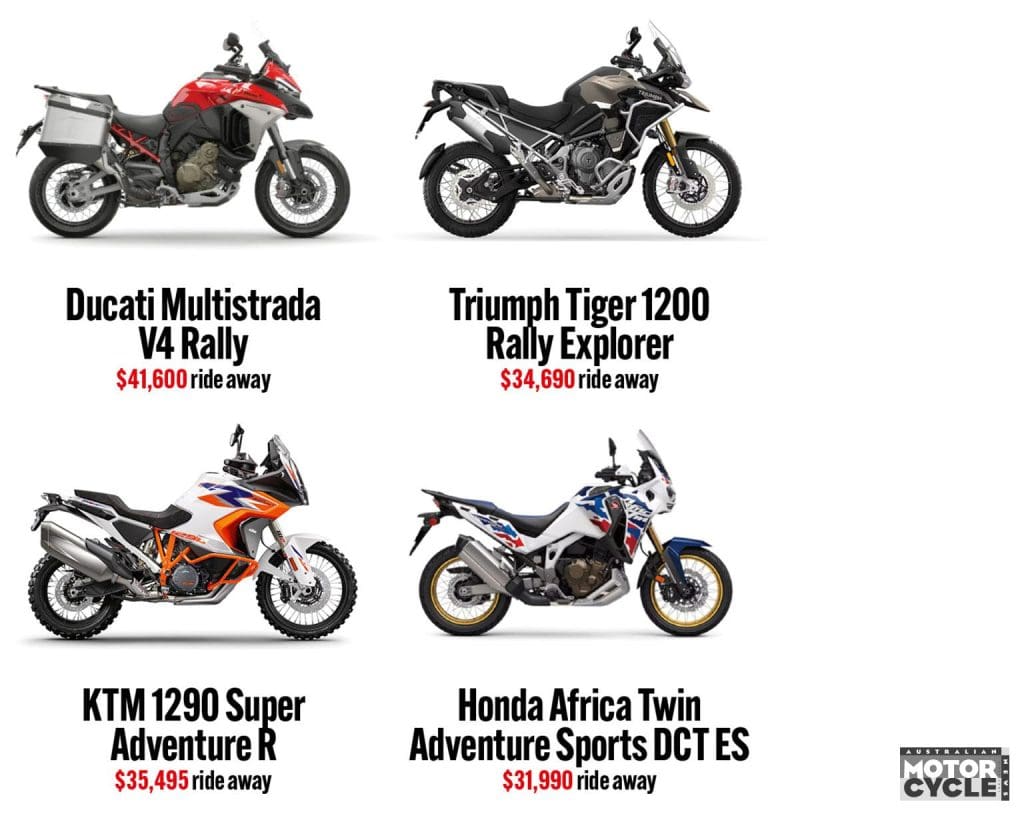
Look Mum, no clutch!
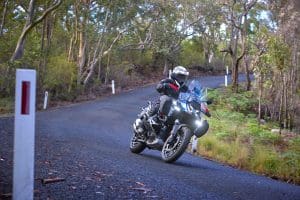
Now available on the GS Adventure is Automated Shift Assistant. A $1200 option that does away with the clutch lever completely and turns your manual motorcycle into an automatic that even your mum could ride. (Maybe.) The clutch becomes automatically operated, then the rider can choose to have the gearshifts performed automatically or manually via the rider’s foot. The auto shifting program is governed by which riding mode the bike is in to be economical or sporty. This is a great option that makes this bike accessible to more people.
WHAT’S ON THE TROPHY?
You name it, the R 1300 GS Adventure Trophy has it. Here’s a quick rundown of the goodies.
Dynamic traction control (DTC) – Each mode has a different setting while in the Pro modes you can make further tuning adjustments. You can also turn it off via the multi-function menu.
Dynamic Suspension Adjustment (DSA) – Selectable between Dynamic, Road and Enduro depending on what mode you are in. In the back menu you can also select four different stiffness settings for Dynamic and Enduro.
Adaptive ride height – Selectable on the move or leave it in auto to lower itself as you come to a stop. This also self-adjusts the preload based on the weight on the bike if you are with luggage pillion or both. It also jacks the bike up to help you get it onto the centrestand.
Ride modes – Eco, Rain, Road, Enduro, Dynamic, Dynamic Pro and Enduro Pro. Only four of these can be available at a time, so choose wisely before the ride. The Pro modes are adjustable for TC, ABS and engine map.
ABS Pro – More than simply ABS, there is rear lift control, brake force distribution and cornering ABS.
Gear shift assistant – Clutchless shifts up and down the gearbox.
Dynamic engine brake control – Like a slipper clutch but electronic.
Radar assistance systems – Active Cruise control, Front Collision warning, Lane Change warning.
Hill start control – You can turn this on or off, but it’s very handy when at traffic lights on a hill or on a trail. Squeeze the brake hard when stopped and it activates, then just ride away.
Anti theft alarm – Built in as standard.
Tyre pressure monitoring – You can set target pressures for road and off-road riding and it will warn you if they drop out of the target range. They also account for the tyre temperature to stay super accurate.
Electric windscreen – Up and down with the push of a button. Like being in your own climate.
Heating – Heated grips, rider seat and passenger seat. Grips and rider seat are activated through the multi-function menu and the passenger seat has its own switch on the side of the seat.
Central locking system – If you fit genuine luggage side cases and top box to the GS Adventure Trophy, you can lock and unlock them all from the key fob.
Phone storage compartment – Up top in front of the fuel cap is a water and dustproof storage area for your phone. Although Wattie’s phone (Samsung S22 Ultra) wouldn’t fit in it.
Cornering headlight – To light up the sides of the road better during cornering at night.
Full phone integration – For calls, messaging and music. Bluetooth to headsets to link it all together.
Integrated GPS unit – Controlled via touch screen or through buttons on the handlebar, it takes control of navigation, calls, music and gives extra bike info. This GPS is a bit more special than your usual car ones, as it allows navigation of GPX files for getting off the gazetted roads. Doesn’t come as standard, but our test rig was fitted with one.
SPECIFICATIONS
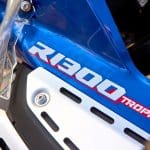
ENGINE
Type Air/liquid-cooled four-stroke flat twin with double overhead and chain driven camshafts and balance gear wheels
Bore x stroke 106.5mm x 73mm
Capacity 1300cc
Rated output 107kW (145hp) @ 7750rpm Max. torque 149Nm @ 6500 rpm
Compression ratio 13.3:1
Fuel system Electronic intake pipe injection
Exhaust emission standards EU 5+
PERFORMANCE
Maximum speed over 200km/h
Fuel consumption 4.9L per 100km
CO2 emission 113g/km
Acceleration 0-100 km/h in 3.4sec
ELECTRICAL SYSTEM
Alternator Three-phase alternator 650W (nominal power)
Battery 12 V/14 Ah, maintenance-free AGM battery
TRANSMISSION
Clutch Multiplate clutch in oil bath, anti-hopping clutch, hydraulically operated
Gearbox Claw-shifted 6-speed gearbox integrated in the transmission housing
Drive Cardan shaft
Traction control BMW Motorrad DTC
CHASSIS/BRAKES
Suspension travel Front/rear 210mm/ 220mm
Wheelbase 1534mm
Castor 118.8mm
Steering head angle 63.8 °
Wheels Cross spoke wheels
Brake, front Twin disc brake, semi-floating discs, diameter 310mm, 4-piston radial brake calipers
Brake, rear Single disc brake, diameter 285mm, 2-piston caliper
ABS BMW Motorrad Full Integral ABS Pro (lean angle optimised)
DIMENSIONS
Seat height unladen 870mm/890mm
Petrol tank volume 30L
Length 2280mm (over splash guard)
Height 1588mm (above windshield, at DIN unladen weight)
Width 1012mm (over hand guard)
Permitted total weight 485kg
Payload (with standard equipment) 217kg
Unladen weight road ready, fully fuelled 269kg
BUSINESS END
Price for bike tested: $43,569.52 (with Sydney 2000 postcode)
Warranty 5 years
CONTACT
